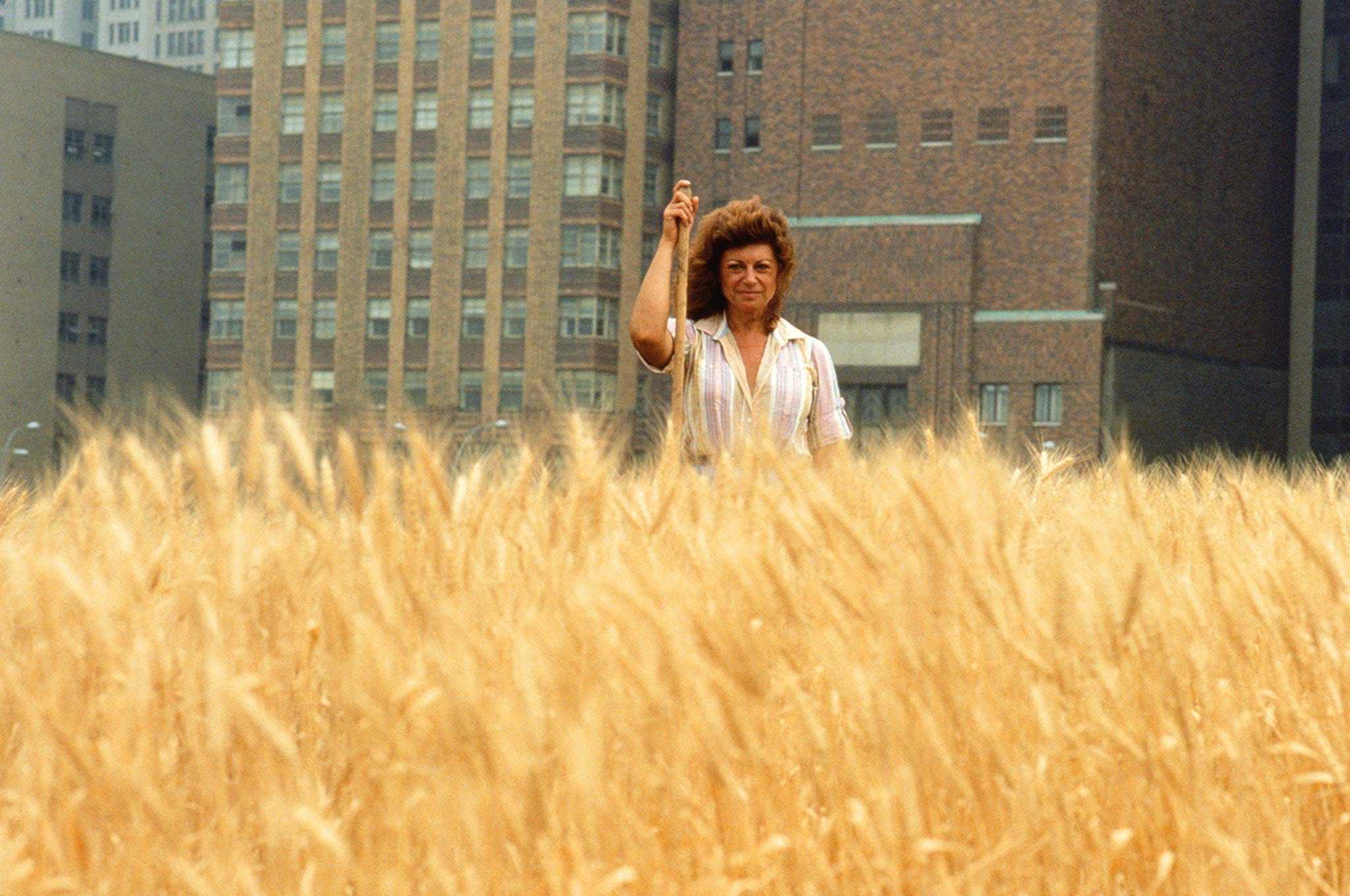For a period of four months in 1982, the most striking element in the crowded, concrete landscape of New York City’s downtown financial district was a pristine two-acre rectangular field of golden wheat.

Planted, maintained, and ultimately harvested by the Hungarian-born conceptual artist Agnes Denes, Wheatfield stood on what had been a vacant landfill on the Battery Park waterfront, in the shadow of the World Trade Center and looking out at the Statue of Liberty in New York Harbor. The result was undeniably beautiful –– a perfectly simple pastoral space existing in one of the most unlikely locations on the planet.
In one of the best photographs documenting the project, the frame is split in two between the bright golden wheat in the foreground and drab brownish gray buildings of the financial district fading from focus in the background, with the garbage-strewn remnants of the landfill in the thin space between them. At the center of the frame, Denes stands in the middle of her wheat, wearing blue jeans and a color short sleeve shirt. Holding a tall wooden staff and gazing into the distance, she strikes a powerful stance reminiscent of Soviet propaganda images of the farmer as revolutionary, a reminder that the project’s full title is Wheatfield - A Confrontation.

According to Denes’ own writing, planting such a simple and elemental crop as wheat on land worth $4.5 billion was intended as a universal symbol that “called attention to our misplaced priorities,” referring to world hunger, land use, and the role of commerce, among other global issues. In a more basic sense, however, the most glaring confrontation in the many images of the project is the visual confrontation between the farm and the city, and which side feels more natural in its ownership of the space. Yet whether cast alongside a landfill, the Statue of Liberty, or some of the most towering buildings that human beings have ever constructed, the most pure and beautiful element in every photograph always remains the pristine expanse of golden wheat.



